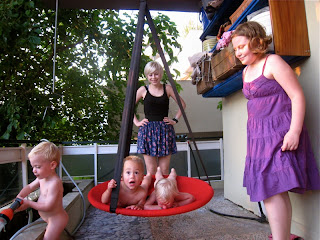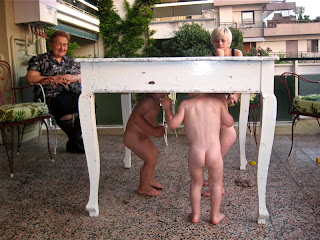On Saturday evening, Bishop Maxim, Fr. Blasko, a priest in his Serbian diocese of Western America, and a group of eight pilgrims arrived in Thessaloniki after spending the first part of their pilgrimage in Constantinople.
On Sunday morning, thanks to the blessing of Metropolitan Anthimos of Thessaloniki, Bishop Maxim presided over a Hierarchical Divine Liturgy at our parish here in Panorama. At the end of the service, somewhat to my surprise, he read two prayers for me: one to become a pneumatikos (spiritual father/confessor) and the second to be elevated to the office of Oikonomos and awarded the accompanying epigonation, or thigh shield.
There are differing theological opinions on the issue of priests hearing confession, but in the Byzantine tradition being a confessor is not automatically conferred with ordination to the priesthood, but is rather a separate charisma (spiritual gift) with a special prayer read by the bishop conferring and confirming the charisma. In Greece, many priests never become confessors. It is usually done on the recommendation of the priest's spiritual father a few years after ordination to the priesthood.
The office of Oikonomos (Economos) is another prayer read by the bishop and is signified by the awarding of the epigonation or thigh shield. It is often connected with hearing confession, to the point that some say the epigonation symbolizes the keys to the Kingdom that were given to St. Peter. As Bishop Maxim noted in his address at the end of the Liturgy, when the Orthodox speak of "symbolism" it means that it "iconizes" (serves as an icon of), refers to, and participates in reality, i.e. the eschatological reality of the coming Kingdom of God.
The word "Oikonomos" means "steward," as in "stewards of the mysteries of God" and the prayer refers to the appropriate management or stewardship of the Church's money and resources.
Above, Bishop Maxim is smiling at the babies as they come up for antidoron.
After the Liturgy, we went to a nearby cafe for a coffee before taking the pilgrims to see a couple things in Thessaloniki. Above, you can see Bishop Maxim speaking with Prof. Dimitris Tselingidis, a professor of Dogmatic Theology here at Aristotle University of Thessaloniki, and a parishioner here in Panorama.
The group really only had time for two stops -- one, of course, to St. Demetrios, and the second to the Serbian War Memorial, which commemorates the 8000 Serbs who gave their lives defending Orthodox Greece in World War I. In these photos, you can see an old Serbian soldier, the cemetery's guard, giving a talk about the cemetery. We did a memorial service in the chapel in the cemetery before the group headed out to Ouranoupolis, from where the men (and I) would depart for Mt. Athos the next day. More on that coming.
To see the group's photos of the early part of their trip, including their time in Thessaloniki, click here.







































